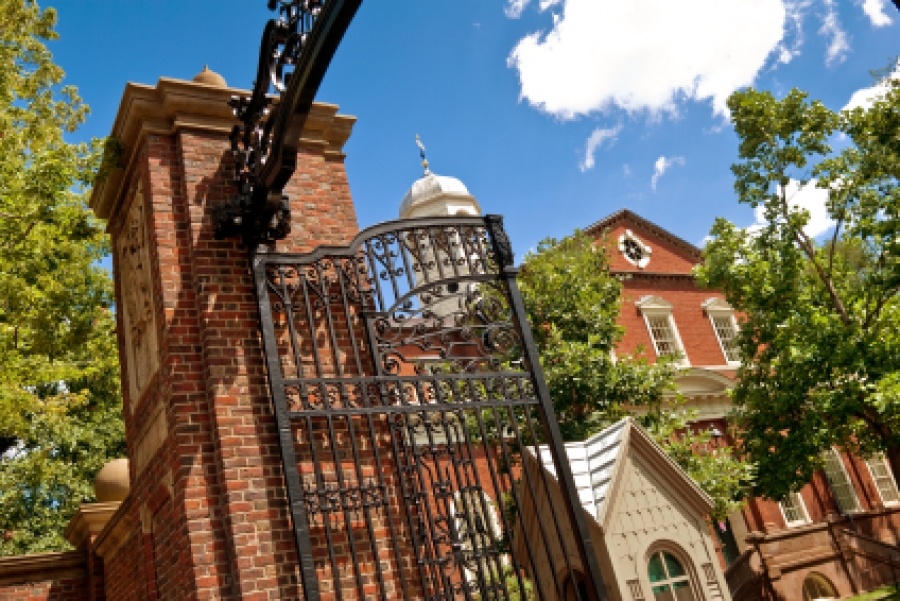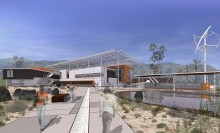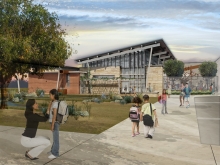Looking at University Initiatives in Sustainability
Video
As Harvard University celebrates the Leadership in Energy and Environmental Design (LEED) certification of 50 campus buildings, the world of higher education has come just a bit closer to embracing a sustainable future. This well known institution is the first to incorporate such a large number of certified new and existing buildings into the fabric of its campus. An additional 39 buildings are currently being planned or awaiting certification as well. The current spread of certified buildings covers a total of 1.5 million sq. ft. and will reach over 4 million sq. ft. when all plans are carried through to completion. Anyone familiar with the LEED certification process understands that this framework includes a set of regulatory measures that incorporate building performance, energy standards, building materials, and operation and maintenance practices through a rigorous assessment process requiring an incredible amount of planning and critique.

Although certainly no stranger to prominence throughout academia, Harvard University's commitment to creating a sustainable built environment stands as a testament to the key role that higher education is playing in shaping the face of our landscape. It would be incorrect to say that Harvard is the only one making great strides in sustainability initiatives, however. An increasing number of colleges and institutions across the country have begun to examine the impact campuses are having on the environment, and they are developing sustainability offices and departments to become leaders in this field, not only in academia. We talked with Jaime Van Mourik, the higher education director of the U.S. Green Building Council (USGBC), to provide some insight on how colleges and universities are tackling sustainability from a ground-up perspective and becoming the forerunners of a greener future.
Collaboration
"To have a successful LEED project you need to have this integration, this interdisciplinary approach. At the end of the day it comes down to the people, after all—the behavior change, the warmth across disciplines.” Jaime Van Mourik, higher education director, USGBC
As seen in the wide scope of controversy that sometimes overshadows the “green debate,” sustainability is no simple process. As such, it certainly deserves a comprehensive and holistic solution. Van Mourik spoke with us about the three-pronged focus that the USGBC utilizes in approaching sustainability on campuses – breaking out of the architectural box to include elements beyond infrastructure and buildings themselves. “The community piece is really important because really what LEED was built on was integrated design, or collaboration among many different disciplines that traditionally never worked very closely together," Van Mourik says. "To have a successful LEED project you need to have this integration, this interdisciplinary approach. At the end of the day it comes down to the people, after all – the behavior change, the warmth across disciplines.”
She goes on to explain the Center for Green Schools, an initiative created by the USGBC to provide resources to both K–12 and higher education institutions for creating a more sustainable community overall. “The Center for Green Schools tries to facilitate conversations at the local level between the businesses, the USGBC local chapters, the community colleges, the primary schools, so that the work will go on and also work with mayors, and state legislatures, people at all levels,” Van Mourik says. The university is the perfect venue to implement LEED building practices, because the requirements vary across building type, she mentions. “A college campus can really benefit from all of the rating systems,” says Van Mourik, “because a college campus is essentially a small city.”
Education
“We’re looking at utilizing the buildings as teaching tools, a campus as a living laboratory for sustainability and green building...so that every student graduates being literate in sustainability and understanding as an educated consumer.” Jaime Van Mourik
Unsurprisingly, the university is at the center of development. “Higher education is seen as educating the next generation of leaders, of researchers, of scientists. We do a lot of our research and development at universities. They are seen as innovators, and I think that’s why – in terms of sustainability and green building – the higher education community has really stepped up to the plate,” Van Mourik says. Higher education doesn’t only represent future change and innovation, however. In square footage it also comprises the leading sector in terms of LEED-certified buildings and has focused heavily on sustainability-focused policy throughout campuses. Creating an environment where leading technologies not only are researched but are witnessed through a vast array of cutting-edge technology and effective design is integral for further development.
The USGBC also sees sustainability solutions as those tackled at a very fundamental level – the consumer. “We’re looking at utilizing the buildings as teaching tools, a campus as a living laboratory for sustainability and green building,” Van Mourik says. “Not just for the disciplines such as architecture, engineering, and construction, but so that every student graduates being literate in sustainability, and understanding as an educated consumer things that they should be looking for when they purchase a home, or for just products, and also just having their awareness about the materials in their office spaces, what they could be potentially breathing in, the toxins, all of those factors.” The USGBC recognizes the need to start learning the topic of sustainability from an early age and building environments conducive to the learning process across the board.
Commitment
One way that we see higher education staying ahead of the rest in sustainability initiatives is its commitment throughout the sector. Countless departments and offices of sustainable development have popped up on campuses nationwide. Van Mourik points out that many institutions are also committing to climate neutrality through the American College and University Presidents Climate Commitment -- with over 675 signatories to that particular commitment. Beyond the top-down measures being implemented, a variety of ground-up initiatives are being sought out by students. Van Mourik explains, “We’ve heard a lot from young adults, that they are interested in being able to distinguish themselves amongst their peers when they graduate, they want to be learning about sustainability and green living, they want to pursue the credentials, the LEED professional credentials that we have to offer. So a couple of years we started a pilot program to establish these student groups and it’s really taken off. We now have 70 student groups on college campuses and this year we will be hosting a couple events, and competitions with our students and really trying to provide them with leadership development.” Having engagement and commitment at all levels of the organization is key in ensuring that these initiatives are continually sought and in providing effective accountability.
“We’ve heard a lot from young adults, that they are interested in being able to distinguish themselves amongst their peers when they graduate, they want to be learning about sustainability and green living, they want to pursue the credentials, the LEED professional credentials that we have to offer." Jaime Van Mourik
The USGBC also understands that commitment often has to start small. Although some higher-profile universities may have the resources to tackle a variety of new projects, those with limited budgets are required to start small. Van Mourik proposes that a university always begin with an assessment. “It’s hard to open up the closet that you sort of shove everything into, not wanting to see what is in there. It’s scary to do an assessment of your college, because you may just find that you’ve had the lights on since the '60s or that your buildings are completely underutilized and the systems are running 24 hours a day," Van Mourik says. "So I would say for any college campus, regardless of endowment size, staff size, tuition, whatever your financial situation, to at least conduct that initial assessment to understand what is happening on your campus. There are certain improvements that you could be making such as a ‘turn off the lights’ campaign or helping to educate your occupants in ways that will save energy – like asking them to shut their computers off. It’s just simple things like that, a simple behavior change that could take place and could ultimately save these dollars, which could then get funneled into the retrofit projects or whatever. So there is certainly something every campus can do, and we talk a lot about the low-hanging fruit, and there are many college campuses out there still picking the low-hanging fruit. And there are the other institutions that have done that and now are really trying to tackle the big stuff.”
As we celebrate the accomplishments and the effects of Harvard’s fantastic sustainability initiatives, it is important to recognize the great gains made by the higher education sector as a whole. The collaboration of these campuses with organizations such as the USGBC could lead to a new wave of sustainability education that could permeate the nation as these students go on to be the leaders of tomorrow. This combination of education, commitment, and integrated collaboration will result in a more holistic approach that can involve everyone from the bottom up, for a built environment that is a greener, improved learning space for all.




